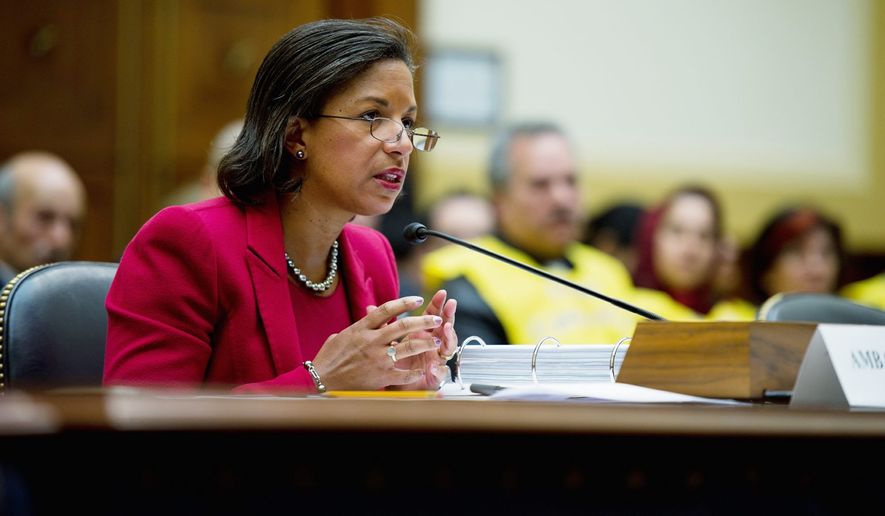A Democratic lawmaker says the White House is “dramatically underestimating” the true cost of the military’s involvement in Libya by relying on accounting that obscures the total financial burden being saddled on taxpayers.
Rep. Brad Sherman, a lawyer and accountant, told The Washington Times on Thursday that more accurate accounting of the mission would provide a clearer picture of just how much money the U.S. pours into this and other U.N.-backed missions while putting Congress in a better position to silence critics who say the nation is shortchanging the global body. The Californian also said the cost of the U.S. involvement in Libya should be covered with the estimated $33 billion in Libyan assets that have been frozen by the Treasury Department.
“As much fun as I find cost accounting, the reason I raise these issues is because I think those Libya assets ought to be available to pay for what goes on over and in Libya, and because I think in negotiating with other countries over whether we are doing enough for the U.N. we should not hesitate to point out the high cost of what we are doing [with U.N. support],” he told The Times.
Last week, Secretary of Defense Robert M. Gates testified that the nation’s initial involvement in establishing a no-fly zone over the skies of Libya — Operation Odyssey Dawn — carried a $550 million price tag and that the cost of the support role to NATO going forward would be about $40 million a month. Mr. Gates also assured lawmakers that he had enough money in his budget to absorb the costs, though he wasn’t ready to reveal the source of the money.
But in a House Foreign Affairs Committee hearing on U.N. funding Thursday with Susan Rice, the U.S. ambassador to the U.N., Mr. Sherman said the Pentagon’s estimates of the mission in Libya are based on what’s known as “marginal-cost” accounting, which doesn’t consider such things as overhead costs from the development of the weapons systems and equipment being used, or the salaries of the military men and women flying airplanes in the skies and floating on ships in the seas around Libya.
“That effort is costing us billions a week,” Mr. Sherman told his colleagues, while arguing that “full-cost” accounting is a more “legitimate system of accounting” that would generate a more accurate snapshot of the financial burden shouldered by the United States. By doing so, he said, the country would gain the “diplomatic advantage of telling the world the enormous burden the taxpayer absorbs in order to make available to such actions as Libya our unique military capacity.”
In a testy exchange, Mrs. Rice said that the “Libya mission is not one that falls under U.N. accounting or U.S. budgeting. It is something we are undertaking in a national capacity.”
Last month, President Obama authorized U.S. forces to help enforce a U.N. resolution calling for the international community to protect civilians in Libya. After a week and a half of the U.S. leading the operations, control was turned over to NATO. Army Gen. Carter F. Hamm, the U.S. general in charge of Africa Command, told the Senate Armed Services Committee on Thursday that the ongoing civil war between Libyan leader Moammar Gadhafi and rebel forces had reached a stalemate, which is “not the preferred solution.”
Meanwhile, on the other side of the Capitol, Rep. Ileana Ros-Lehtinen, Florida Republican and chairwoman of the House Foreign Relations Committee, said she plans to introduce a bill next week that would make all U.S. contributions to the U.N. voluntary.
With the country facing trillion-dollar deficits, Ms. Ros-Lehtinen and other committee Republicans said U.S. payments to the U.N. should be contingent on the world body making serious efforts to reform the Human Rights Council and stopping what they said amounts to an anti-Israel agenda.
As it stands, the U.S. is the largest contributor to the U.N., paying 22 percent of the U.N.’s regular budget and 27 percent of the money for peacekeeping operations.
After the Foreign Relations Committee hearing, Mr. Sherman told The Times that marginal cost accounting is rarely — if ever — used in private industry, where overhead, research, training and salaries are used to determine cost.
“I think they have lowballed it by using marginal cost,” he said, alluding to the Pentagon’s estimate. “And as far as I can tell they have computed the narrowest definition of marginal cost accurately, but marginal cost is a small percentage of the full cost of anything.”
“From my experience in private industry, marginal cost is 10 to 20 percent of full cost,” he said. “I have never seen a circumstance where marginal cost was even half of full cost.”
• Seth McLaughlin can be reached at smclaughlin@washingtontimes.com.




Please read our comment policy before commenting.